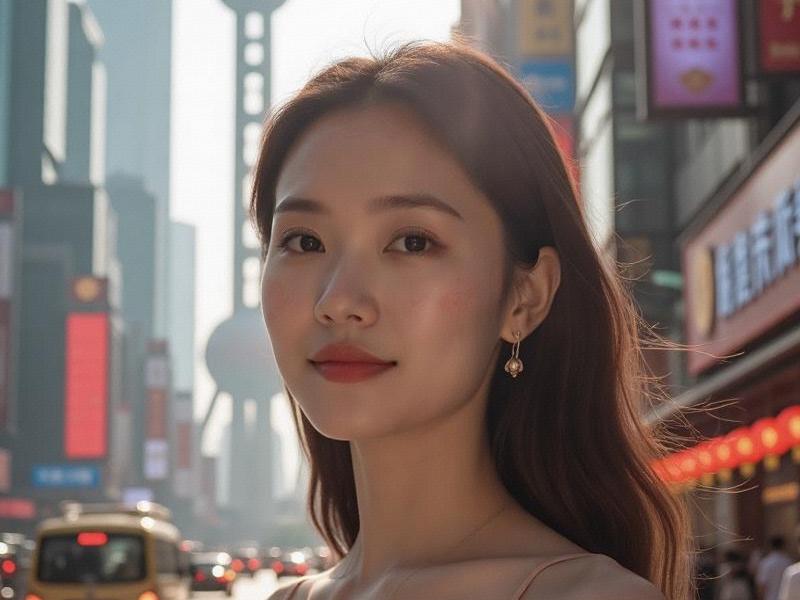Shanghai Style Renaissance: The New Generation Redefining Chinese Beauty Standards
⏱ 2025-05-22 00:55 🔖 阿拉爱上海千花网
📢0℃

SECTION 1: HISTORICAL CONTEXT
• Golden Age Legacy (1920s-40s):
- Qipao silhouette revolution
- "Haipai" cosmopolitan elegance
- First Western cosmetics adoption
- Calendar girl iconography
- Beauty salon culture emergence
• Socialist Transformation (1950s-70s):
- Revolutionary austerity
- Practical braided hairstyles
- Blue-gray fashion uniformity
- Minimalist beauty ideology
- Worker-producer aesthetic
MODERN BEAUTY LANDSCAPE
• Current Ideals:
- "Glass skin" perfection
- Slim yet curved physique
- Natural-looking enhancement
- Eclectic fashion sense
- Youthful vitality focus
爱上海同城419 • Industry Dynamics:
- ¥92B beauty market (2025)
- K-beauty crossover trends
- Local KOL dominance
- Non-surgical procedure boom
- Customized skincare regimens
CULTURAL DUALITIES
• Traditional Expectations:
- Marriage market pressures
- Corporate appearance codes
- Age-related beauty norms
- Intergenerational conflicts
- Filial piety expressions
• Global Fusion:
- Hybrid makeup techniques
- Fast fashion adaptation
- Streetwear influences
- Gender-fluid experimentation
- Body positivity movements
ECONOMIC REALITIES
夜上海最新论坛
• Consumer Behavior:
- Average ¥2,100 monthly spend
- 68% premium product preference
- Counterfeit market challenges
- Sustainability awareness
- Male grooming expansion
• Workplace Dynamics:
- Appearance discrimination cases
- Executive image crafting
- Ageism in recruitment
- "Beauty premium" studies
- Professional dress codes
DIGITAL REVOLUTION
• Virtual Beauty:
- AR makeup trials
- AI skin diagnostics
- Livestream shopping
- Digital avatar creation
- Algorithm-driven trends
上海花千坊龙凤 • Youth Subcultures:
- Cosplay convention scene
- Underground fashion tribes
- Beauty vlogger economy
- Androgynous aesthetics
- DIY beauty movements
FUTURE HORIZONS
• Emerging Trends:
- Authenticity movements
- Mature beauty acceptance
- Tech-enabled customization
- Heritage revival
- Global trendsetting
• Ongoing Challenges:
- Unrealistic standards
- Consumerism pressures
- Rural-urban divides
- Mental health impacts
- Regulatory gaps
CONCLUSION:
Shanghai's beauty culture represents China's dynamic negotiation between tradition and modernity, creating a distinctive aesthetic language that influences beauty standards across Asia while confronting contemporary social challenges.
Shanghai’s Gilded Lounges: Where Art Deco Opulence Meets AI-Curated ExtravaganceThe Great Shanghai Convergence: How the Mega-City Is Reshaping the Yangtze Delta Region"Code and Qipao: How Shanghai's Women Are Rewriting the Rules of Modern Femininity"The Yangtze River Delta Megaregion: Shanghai's Bold Vision for Integrated Urban Future《海派丽人启示录:上海女性审美变迁与都市文化演进》弄堂里的"新主人":上海城市更新中的社区共生与文化新生Shanghai's Nocturnal Revolution: How the City Redefines Luxury Entertainment《从"百乐门"到"数字包厢":解码上海娱乐会所的百年进化史》文章开始Shanghai's Beauty: A Blend of Tradition and ModernityShanghai 2045: The Living Laboratory of Urban Futurism

